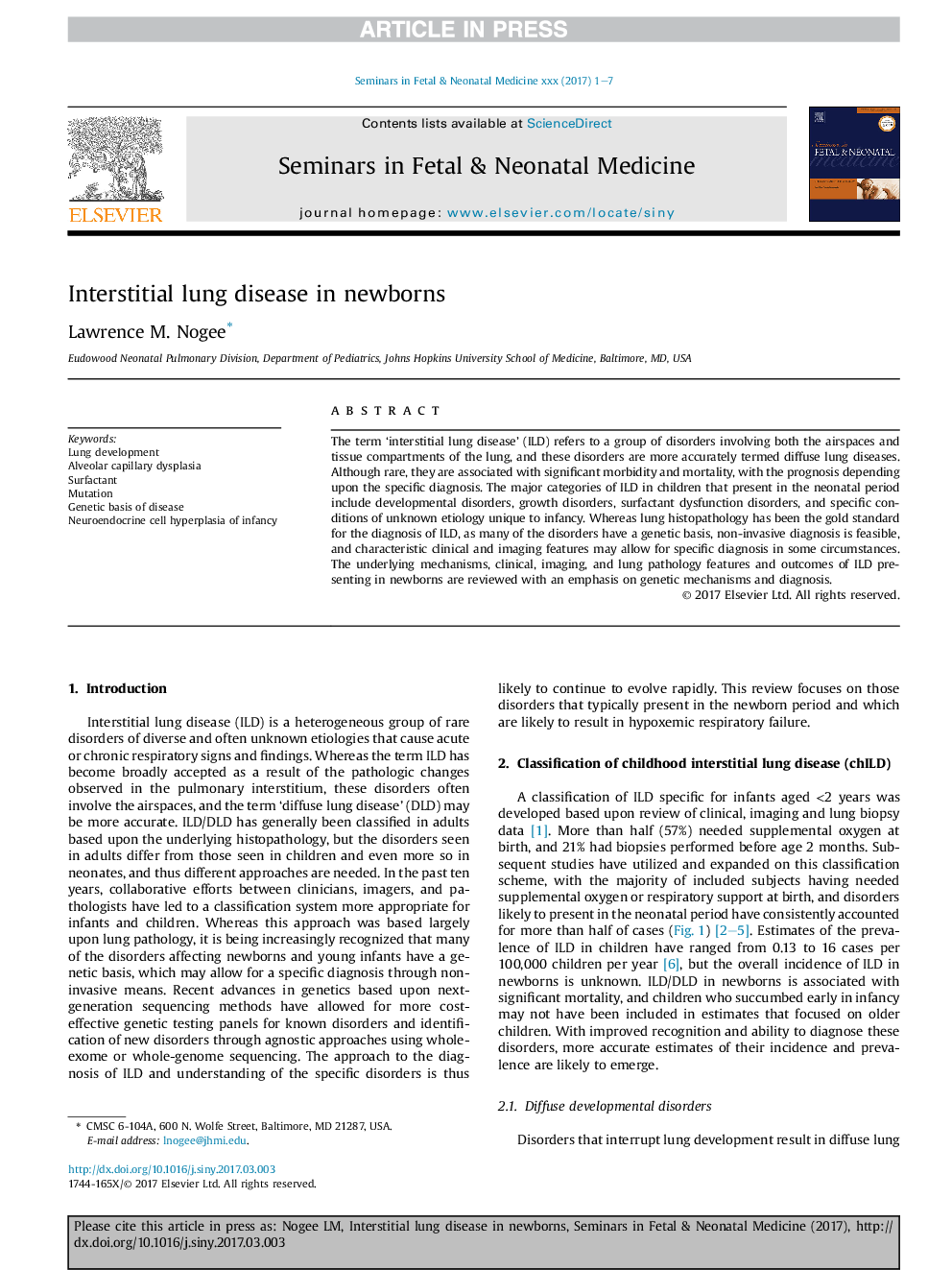| Article ID | Journal | Published Year | Pages | File Type |
|---|---|---|---|---|
| 5696930 | Seminars in Fetal and Neonatal Medicine | 2017 | 7 Pages |
Abstract
The term 'interstitial lung disease' (ILD) refers to a group of disorders involving both the airspaces and tissue compartments of the lung, and these disorders are more accurately termed diffuse lung diseases. Although rare, they are associated with significant morbidity and mortality, with the prognosis depending upon the specific diagnosis. The major categories of ILD in children that present in the neonatal period include developmental disorders, growth disorders, surfactant dysfunction disorders, and specific conditions of unknown etiology unique to infancy. Whereas lung histopathology has been the gold standard for the diagnosis of ILD, as many of the disorders have a genetic basis, non-invasive diagnosis is feasible, and characteristic clinical and imaging features may allow for specific diagnosis in some circumstances. The underlying mechanisms, clinical, imaging, and lung pathology features and outcomes of ILD presenting in newborns are reviewed with an emphasis on genetic mechanisms and diagnosis.
Keywords
Related Topics
Health Sciences
Medicine and Dentistry
Obstetrics, Gynecology and Women's Health
Authors
Lawrence M. Nogee,
